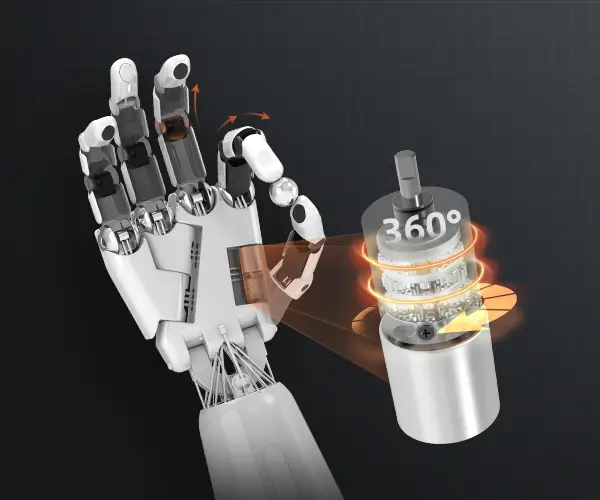Unlocking Precision and Power: The Fascinating World of Stepper Motors with Gear Reduction
In the realm of precise motion control, few components have revolutionized the way machines move and adapt quite like the stepper motor. These electrical motors, renowned for their ability to divide a full rotation into a multitude of discrete steps, offer unmatched control over position and speed. When paired with gear reduction mechanisms, their capabilities are amplified, unlocking a new echelon of performance ideal for an array of sophisticated applications—from industrial automation to advanced robotics.

What is a Stepper Motor?
At its core, a stepper motor is a brushless, synchronous motor that converts electrical pulses into precise mechanical movements. Unlike conventional motors that rotate continuously when powered, stepper motors move in very specific series of steps, which makes them inherently suited for applications demanding exact positional control.
This attribute owes itself to the motor’s internal design: multiple coils organized in phases, that energize in sequence to produce incremental rotation of the rotor—a permanent magnet or a soft iron core—by fixed angles, known as steps. The angle of each step depends on the design, commonly 1.8 degrees (200 steps per revolution) for standard motors, but some can go as fine as 0.9 degrees or even smaller for ultra-high precision.
Why Combine Gear Reduction with Stepper Motors?
While stepper motors excel at accuracy, their raw torque—especially at higher speeds—can sometimes fall short. Enter gear reduction, an ingenious mechanical system designed to boost the motor's torque and improve positional accuracy further.
At its simplest, gear reduction involves incorporating a gear train—comprised of gears with different diameters or gear ratios—between the motor and the load. This setup divides the motor’s rotation, translating a smaller input motion into a larger, more precise output movement, along with significant torque multiplication. Consequently, the combination results in several clear advantages:
Enhanced Torque: The gear train amplifies the rotational force, allowing the motor to handle heavier loads without stalling or overheating. Increased Precision: The reduction ratio effectively increases the resolution. For example, a gear ratio of 1:10 means that each step of the motor results in one-tenth of the output shaft’s movement, enabling finer positional control. Reduced Speed: The gear train lowers the output speed, making the system suitable for applications that require slow, controlled motions—like robotic arms or CNC machines. Improved Holding Power: The high torque at the gear reduction output allows the load to be held steadily without constant motor current, conserving energy and reducing heat.
Types of Gear Reduction Systems
Gear reduction systems come in numerous types, each with its unique advantages and ideal applications:
Spur Gears: The most straightforward, these gears mesh directly and are simple to manufacture, offering high efficiency. They are suitable for moderate reduction ratios and lightweight systems. Planetary Gears: Featuring a central sun gear, planet gears, and an outer ring gear, these systems provide high torque density and compact design. They are ideal for applications requiring high reduction ratios in a small package. Helical Gears: Similar to spur gears but with angled teeth, offering smoother and quieter operation, especially suitable for high-speed or high-precision settings. Worm Gears: Allow high reduction ratios and provide a locking feature (self-locking), making them perfect for applications where holding a position without power is necessary.
Design Considerations When Using Gear-Reduced Stepper Motors
Integrating gear reduction into a stepper motor setup isn’t just about adding gears—it requires careful planning:
Gear Ratio Selection: The ratio determines the trade-off between speed, torque, and resolution. High ratios improve torque and precision but reduce maximum speed. Efficiency Losses: Gears are not 100% efficient. Friction, backlash, and wear can affect overall system performance. Selecting high-quality gears minimizes these issues. Backlash: Any gear train introduces some amount of backlash—play or slack in gear teeth—that can affect positional accuracy. Anti-backlash designs or gear pre-loading can mitigate this. Lubrication and Maintenance: Proper lubrication ensures smooth operation and prolongs gear life, especially in systems subjected to continuous or heavy loads. Motor Compatibility: Ensuring the motor’s shaft and specifications align with the gear reduction assembly is critical to setup durability and performance.
Applications of Gear-Reduced Stepper Motors
The combination of accuracy, torque, and controlled speed makes gear-reduced stepper motors invaluable across multiple sectors:
Robotics: Precise joint movement, end-effector positioning, and high-torque actuation benefit greatly from gear reduction. CNC Machines: The high torque and fine resolution help achieve detailed cutting and engraving tasks. 3D Printing: Ensures fine layer control with reliable positional accuracy. Medical Equipment: Surgical robots and laboratory automation demand exact movement, often using gear-reduced stepper motors. Automated Camera Systems: Smooth panning and tilting, especially with high payloads, rely on these systems for silent, precise positioning.
Additionally, the ability to customize gear ratios means these systems are adaptable to highly specific applications, whether through standard off-the-shelf gearboxes or bespoke arrangements.
Established in 2005, Kpower has been dedicated to a professional compact motion unit manufacturer, headquartered in Dongguan, Guangdong Province, China.




































